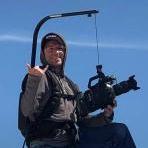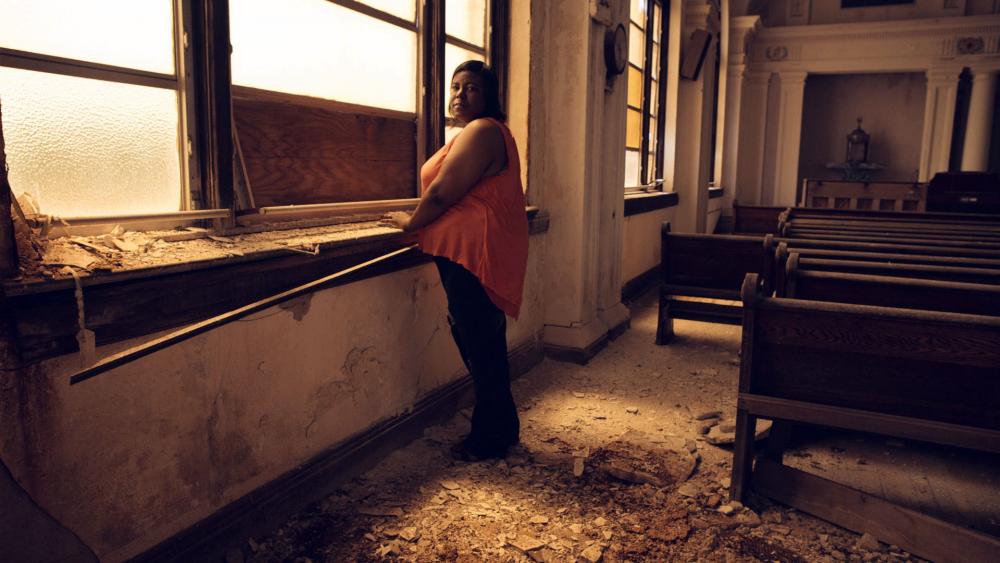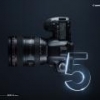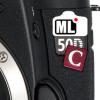Leaderboard
Popular Content
Showing content with the highest reputation on 05/01/2015 in all areas
-
I think now a days we can all shoot log - and we get lost in that log - we get used to that flat look - but rewatching monsters - it has a deeper s curve and dark black and nice raised midtones - it’s bolder - it’s more natural I think - more like the cinema that I grew up on. It's hard to throw out dynamic range when you have it, but sometimes you have to - and you'll love it. below I took out window detail to gain a pop that I enjoyed - maybe if I graded better I can do a power window and have it all!2 points
-

Lenses should have megapixel ratings
Brian W. Allan and one other reacted to Geoff CB for a topic
Could not disagree more. It would be the second coming of the Megapixel race in pocket cameras for dumb consumers. I give you an example as to why. Say you have a lens thats listed it as 40 mp on it. Yea it may resolve that, but hows the image? Bokeh? Chromatic Aberration? When sharpness becomes the main concern for manufacturers (more than it is now) then we all suffer creatively for it. As someone that uses Cinema glass on his GH4 you know that resolution is not the most important aspect of an image :)2 points -
Lenses should have megapixel ratings
Marco Bentz and one other reacted to MattGrum for a topic
MTF charts published by lens producers are already greatly reduced in complexity, in that in general they only show contrast for two spatial frequencies (usually 10 and 40 lp/mm) and two aperture values (usually wide open and f/8) and two image plane orientations (sagital and tangential). The "full" MTF is a four dimensional quantity which is difficult to represent in 2 dimensions. I put "full" in quotes because it also depends on focal length for a zoom lens, and, to an extent, on the focus distance thus it can be a six-dimensional object. I hope you can appreciate why it's impossible to boil a six-dimensional function down to a single number. You could simplify it further and measure the MTF at a few distances from the image centre (centre, top/bottom edge, left/right edge and extreme corner), but it's been heavily simplified already and that would cut a lot out. You could try averaging the figures but the range you average over would be fairly arbitrary and subject to differences between manufacturers. And the idea that manufacturers attach a resolution figure to the lens in order to sell them would just open the flood gates to clever ways to inflate the score by carefully choosing what to include/exclude.2 points -
Lenses should have megapixel ratings
Marco Bentz and one other reacted to MattGrum for a topic
No they really shouldn't. A lens does not "resolve 6MP". A lens renders a certain spatial frequency at a certain contrast ratio. It might take detail at 20 line pairs per millimeter and produce 70% contrast, detail at 50 line pairs per millimeter results in 30% contrast etc. This relationship is captured by the modulation transfer function (MTF), a quantity which varies according to the distance from the image centre, and the direction you measure in (sagital vs tangential). Manufacturers already publish MTF charts for their lenses, which is the equivalent of what you're suggesting, only much more meaningful. There are some differences in how these charts are computed (e.g. whether diffraction is included or not) so they're not always directly comparable, but they aren't anywhere near as misleading as trying to attach a single "megapixel" rating to lenses. The other reason stating "this lens resolves 6MP" is meaningless is that the important thing in determining how you images will look is not the lens MTF itself, but the system MTF. The system MTF is the product of MTFs of each part, the lens the filter stack and the sensor (and image processing to an extent). Because it's a mathematical product (a lens delivering 80% contrast combined with an AA filter that delivers 95% contrast results in 76% contrast (0.8 x 0.95 x 100)) you can improve the system MTF by improving the MTF of any component in the system. Hence you "6MP" lens will give you more resolution on a 24MP body than on a 6MP body. It's exactly this thinking that leads people to declare that there's no reason to have a 50MP sensor as there are no 50MP lenses in existence. Even the kit lens in your example produces some contrast in the centre of the image at 50MP.2 points -
This is a recent short that I did. My wife and I were originally making it to use as a sort of announcement that we were having a baby (only our immediate family knew about it) but I also wanted it to stand alone as a fun little short. After shooting the bulk of the footage my wife went into labor the next day so we had to do all of the quick zoom/close-up shots weeks after. Better late than never! Since I was unfortunately in the video, I had to rely on my wife for shooting most of it and when we couldn't operate the camera ourselves, we called over my Dad and a friend in the middle of the night to help us shoot. All three of them had absolutely zero experience shooting anything and as a testament to the NX1, they all learned the basics of the camera reasonably quickly.1 point
-
Anyone test this yet? DP review says the HDMI out is 8 bit 4:2:2. I saw some early tests but I guess it wasn't working well, something about being limited to 30p or something like that. Have these issues been sorted out with latest firmware updates. Atomos has a set up guide on their vimeo page but no footage so far. I wonder if using an external recorder could help with low light macro blocking and noise. I'm still surprised there hasn't been more tests of the NX1 HDMI out.1 point
-
Vimeo pivots away from free video-sharing into paid content
mtheory reacted to silvertonesx24 for a topic
Another interesting article http://crooksandliars.com/2015/02/facebooks-worst-nightmare-what-if-social A marketer I listen to once analogized social to a vast, vast ocean, one foot deep.1 point -
Some very interesting ideas about discovery fatigue and content shock. I find that internet in 90s seemed to be of better quality...what I mean by that is that the actual technical barrier to content publishing kind of ensured that only the most dedicated, motivated, competent people got through and that resulted in content that was very good and engaging...now we are in the era of casual publishing...where the barrier of entry is so low that people are literally live-streaming their breakfasts and lunches...that is a problem...I don't know how it can be solved really...only corporations can really cut through the noise now, it seems.1 point
-
Some of the best short films deal with an isolated incident without exposition, much in the 'man bites dog' manner, like the urban myths we tell another in the subway or the staff canteen. Feature films are too much classical drama with predictable plot points. Everybody sees how the cookie crumbles, the characters can only be walking clichés, because their motivations must fit exactly to the structure - exceptions prove the rule, and they are risky, Series are the ultimate narrational form, they are epic. They combine isolated situations with slowly developing characters and fates. Audiences love long excurses in modern series, something they seldom accept in a feature (The Lonely Grave Of Paula Schultz, derisive chapter title that could also say And now for something completely different, and absurd). The stories are almost deconstructivistic, and the suspense can't be more addictive.1 point
-
there are tons of streaming indie film sites - my favorite is https://mubi.com/ - $5 a month film school in a box for $51 point
-

Canon XC10 "lens slides out" when used on drone
TAPTAP reacted to AaronChicago for a topic
Specs aside, I've seen some amazing looking footage from the GH4 on drones. Even with the new GoPro "de-fisheyed". Aerial shots have such a wow factor that I don't believe people are going to look at it and say it sucks b/c it has 10 stops of DR instead of 12.1 point -

Vimeo pivots away from free video-sharing into paid content
Julian reacted to AaronChicago for a topic
What ever happened to them blocking copyrighted songs? All of my videos with copyrighted music is still up and working.1 point -
I think they are just having trouble keeping the website running because they dont show ads. That doesn't mean they're trying to become something else. They're just trying to make money where they can in order to stay alive. In fact I like the fact that you can rent or buy videos there. It lets short film makers make some money.1 point
-
MTF charts are tough to interpret for beginners. Not sure if one number alone would tell enough about a lens though. One simple way of presenting it would be to split it up into three numbers: center point resolution (best case), edge resolution (worst case), and then an average resolution based on a number of samples taken from edge to center of the lens. This could tell quite a bit without having it presented only in a MTF chart.1 point
-

Lenses should have megapixel ratings
Brian W. Allan reacted to Eric Westpheling for a topic
This would be near useless for me and most folks I work with. Any modern production lens will resolve enough detail to keep you from getting a pink slip. I wouldn't project some lenses 40' tall but for youtube or even broadcast I would rank a lens' resolution numbers near the lowest of important characteristics for my uses as a cinematographer. The overall aesthetic performance of a lens is what matters, followed closely by ergonomics. The former is not something a lens review will tell you much about. You might be able to spot some bokeh and vignetting characteristics, but short of renting it and pointing it at a person and looking at them in a few sizes you won't know much about a lens. The only reviewer I see doing any work like this is Lloyd Chambers of Diglloyd.com: his in-depth reviews, aperture series, and expert commentary are worth every penny of his subscription costs. When the Sigma art 35mm 1.4 came out I rented it for a comparison to my beloved Zeiss ZE 35mm 1.4, and yes the Sigma could have an edge in resolution in some scenarios, but the Zeiss trounced it in terms of pure image harmony. Switching blind A/B on the monitor my crew all settled on the Zeiss. Just goes to show you DxO mark resolution numbers should not be a huge consideration in your purchases unless you are in the business of photographing and making reproductions of test charts.1 point -

Quantum Dot Sensors Imminent
Julian reacted to Andrew Reid for a topic
Looks like they are already here!! http://www.canonrumors.com/2015/04/possible-issue-with-t6s-t6i-sensors/1 point -
Lenses should have megapixel ratings
Chris Santucci reacted to jax_rox for a topic
I'm going to go ahead and say that the average consumer actually doesn't really care. They buy based on numbers because in their mind higher megapixel = better. They have no understanding of why, or how - but that's the thought process. If you showed an average consumer a picture taken with a $100 kit lens, next to the same picture taken on the same body at the same focal length with a $1200 lens - they may or may not see much difference. But they're unlikely to go out and spend an extra $1100 on a lens. Most consumers are baffled when you tell them a single lens can cost $100,000. Professionals buy expensive lenses because they appreciate and understand the very reason they're expensive. Professionals (and even enthusiasts, I guess) care about the quality of all the components, because they know the difference it makes to the picture. Consumers don't get it. Realistically, someone who's just picked up a camera is unlikely to take amazing photos even if they have a $1200 lens on it.1 point -
But downscaling 8K to 4K requires a lot more horsepower of course, since it is four times the data... Also it means you need a sensor that can do full pixel readout at very high speed. Here's a list of Sony sensors with some specs: http://www.sony.net/Products/SC-HP/IS/sensor2/products/index.html You can see the IMX094 (36MP fullframe) for example, as used in the Nikon D800 / Sony A7R. Max Frame Rate @All pixels = 4,7 fps. Speeds are going up though. The current Sony 24MP asp-c sensor (IMX193) does 8.7 fps. There's a new one listed (IMX271) that is rated at 19 fps. Maybe this could be used for 4K with a small crop or little processing. Sadly the 12MP 35mm Sony sensor is not listed, would be interesting to know the max frame rate of that one.1 point
-
Which is a great achievement indeed. The NX1 is a bit bigger than a Sony A7 though and has a smaller sensor. Samsung has more room for heat disposal. My point still stands: high resolution is not an advantage for 4K, it's the opposite. Look at the video quality of the Canon 5DS / 5DS R...1 point
-

Canon XC10 "lens slides out" when used on drone
TAPTAP reacted to Clayton Moore for a topic
Its not a story, its opinion and thats part of Andrews gig here. A combination of straight technical camera geek, stuff and opinion. Like it or not this post fits in perfectly with what this blog has always been about. Oh and seriously for $2,500 this camera may to some feel like it was rushed to market before it was ready.1 point -
I agree, in the years and years which a person might spend to produce just one "high quality" film (it might even never happen...), another person could've in the same length of time produced half a dozen or more quick films that gradually escalated in complexity and budget. Who do you think at the end of this period has gained greater knowledge and more contacts, and is better prepared for his next film? I'd say obviously the latter person. You're making some huge assumptions here. Take another example: running. Does everybody who takes up jogging aims or even want to go to the Olympics? Nope! Some runners just enjoy the process of running, and who cares about how far back they finish?? They don't. Others enjoy running for all the other benefits they reap from running (which is many many!), other than the elusive Olympus Gold Medal. Yet another group of runners are happy if simply their PB drops each year to be faster than the year before, even if they never ever get close to breaking 30 minutes for 10km (let alone a 26 minute something 10km for top Olympic standards!). Now, why should filmmaking have to be any different? There are a very very diverse range of reasons and motivations as to why people are filmmakers.1 point
-
Lenses should have megapixel ratings
Brian W. Allan reacted to alexcosy for a topic
I'm sorry to say, but i think it's a terrible idea. We know how the consumer operates, people would then only look at the this megapixel count, as they already do with cameras. It's already not a good thing with cameras but it can make sense i guess sometimes, because it can be important. A lens is sooooo much more than its megapixel resolving power. Besides, most people actually don't care enough to really mind if it has a high resolving power or not. Like you said, a lot use the kit lens and they're very happy with it, it's good enough for them and the may not want to spend any more money on it. The few others who know enough about lenses, optic, and photography in general to really be interested in this matter, also know enough to go look for reviews, test, advice, photos on flickr etc... Plus, people would always ask "how many megapixels does that lens resolve" without know anything else about the lens, only focalizing on this, when everything else about a lens is so interesting and important. And to conclude, i guess MTF charts are there solely for that purpose.1 point -

Lenses should have megapixel ratings
Brian W. Allan reacted to Don Kotlos for a topic
Nikon has golden rings, canon has L letters, sigma has the art series... I would prefer instead for the average user to use their brain a bit better than have a company find better ways to "advertise" their products.1 point -
There is no debate here. Who the hell would buy this camera for drone, when they can have a BM micro cinema camera, perfect for the job (lighter, RAW, lens flexibility, 2 times cheaper even with lens) ??? This camera is not for drone use. This camera is a April fool by Canon that came a few days too late. Can't wait to see the 5D4, and / or 5DC to see if Canon is officially becoming a pure shit player and going to death (not speaking about video only, but sorry even for stills a D810 is 100x better than 5D3, just to mention the 2004 like dynamic range) or if they are back in the game (5D4 with 4K, or 5DC with exact same video quality & 4k as 1DC for 3500USD, which is possible if you look at the 5DIII/1DX image quality and price difference).1 point
-

Canon XC10 "lens slides out" when used on drone
IronFilm reacted to Andrew Reid for a topic
Offers an alternative......................... For $8000 or $15,000!1 point -

Canon XC10 "lens slides out" when used on drone
IronFilm reacted to Andrew Reid for a topic
Jimmy the fan boy speaks again. It's not a prototype, it's a pre-production. Tiny little tweaks for mass production and it's done. If the non-prototype has a lock on the lens and doesn't need taping up for your drone, give us a call!1 point -

Canon XC10 "lens slides out" when used on drone
IronFilm reacted to AaronChicago for a topic
At least Canon offers alternatives. I'm still mad at Panasonic for not releasing a kick ass AF200. (yet)1 point -
The 14-140mm is a great flexible lens. It's sharp, has pretty nice rendering and contrast and everything. But... personally I think it's a little too modern and tends to give off a slight clinical but also video look. Kinda lacks 'soul' so to say. The pancakes are pretty sweet, the 20mm f/1.7 and the 14mm f/2.5. Olympus has very sweet offerings too, and I like the character Olympus lenses give off quite a bit better, more organic with very nice rendering. Yes, they are e-native lenses, even the Olympus ones, they share the same e-mount, so in-camera settings and autofocus. With none of the Olympus lenses stabilization though, as Olympus doesn't build that into the lens, but into their camera bodies. But then again, the 14 and 20mm lenses also do not feature built-in stabilization. The closest thing to the 15mm f/1.7 Summilux might be the 17mm f/1.8 from Olympus. They're pretty similar in price. No experience with either here, so not sure which is the better performer. If you want it for tight spaces... there are the Tokina 11-16 or 11-20mm f/2.8 zoomlenses. Not as tack sharp as a prime, especially wide open, but very usable and flexible lenses I'd like to think. Could get one with a Nikon mount and cheap dummy adapter. Or a focal reducer/lens turbo. Or if you can accept the price and range the Sigma ART 18-35mm f/1.8 of course. But again, adapter needed, so no AF, full manual everything. Could be the holy grail amongst the choices though... In the end it's a tough call I guess. But you really have to be dedicated and sure of the choice for the 15mm f/1.7, because you're putting quite the constraint on your range. The 14-140mm again is just so great because it's so flexible. But if its character bothers you, then that's not really gonna work either.1 point







